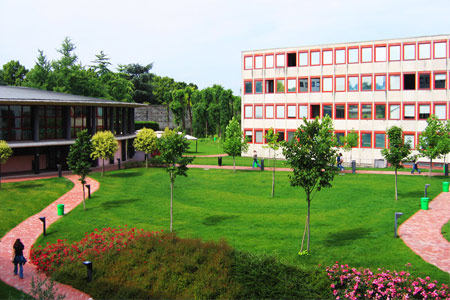The research starts from a writing of Scipione Maffei. In the article Museo Imperiale d’Inscrizioni, printed in 1737 in the first volume of the «Osservazioni letterarie», he recalls the story of a special endeavour of antiquarian collecting sponsored by Charles VI:
«In 1722, while working at the building of a fortress in Transylvania near the town of Weissenburg, today Carlsburg, and digging deeply in order to find materials, some ruins of important ancient buildings were found. Among these there were some inscriptions. The count Giuseppe Ariosti, once captain, and now lieutenant-colonel of the imperial army, was there. The inscriptions caught his erudite genius. He copied them with utmost care and began to look for other inscriptions which were in that town and in the surroundings. He sent a copy of all of them to the marquise Maffei who was in Florence. He complained about the fact that some inscriptions were lost, used like ordinary stones during the construction that was taking place. Maffei wrote immediately to Apostolo Zeno, historian and poet at the court of Charles VI, so that he could tell the emperor, that it would be very honourable for him to preserve such precious roman witnesses. He added that, if he had them collected and had them brought in Vienna, he would have created the most important enrichment to his very famous museum. There has never been such august sovereign, even concerning the letters, who was better him in promptness and expenses sustaining the suggestions he received. He immediately ordered to respect and collect as many inscriptions as possible in that place, and to bring them to Vienna. Ariosti himself was in charge of this collection. He went in many places and had 56 big tombstones loaded in four ships on the river Mariso, that is Marisio. Through this river entering the Tibisco he had them unloaded into other ships fit for the navigation of that river and of the Danube. One of those ships unfortunately sank at Szeged and it was impossible to save it with the 18 stones that it contained. He arrived happily with the other ones in Vienna (Maffei 1737, pp. 168-70).
For his edition Maffei used a transcription he obtained by Ariosti, who prepared more copies of the epigraphic collection. Theodor Mommsen registers it in C.I.L. III (Mommsen 1873, p. 157):
— WIEN, Oesterreichische Nationalbibliothek, ms. 8798 (Eugen. 26);
— WIEN, Oesterreichische Nationalbibliothek, ms. 9489 (traduzione latina del 1754, già appartenente alla biblioteca degli Agostiniani;
— BUDAPEST, Széczenyi Bibl , ms. 5;
— VERONA, Biblioteca Capitolare, ms. CCLXVII (238).
It is necessary to clarify that the above mentioned libraries and institutions which are the seat of conservation of the manuscripts or of the printed material will not collaborate to the mentioned project. It is important to point out that the drawings by Ariosti are the only graphic documentation of the lost tombstones. The manuscript which is the object of analysis is preserved in the Capitolare Library in Verona and was endowed by Scipione Maffei, as his notes on the bottom of the frontpage show: S.M.D.D. (Scipio Maffejus dono dedit).
We transcribe the frontpage, which has been photographically reproduced in Spanish 1996 and in Albarello 1997:
INSCRIZIONI ANTICHE/ TROVATE, E RACCOLTE TRA LE ROVINE/ DELLE QUATTRO PRINCIPALI COLONIE ROMANE/ DELLA TRANSILVANIA/ DAL CONTE GIOSEPPE ARIOSTI NOBILE BOLOGNESE/ FERRARESE, E SENESE CAPITANO D’INFANTERIA/ /NEL REGIMENTO GAIER./E PARTE DI ESSE/DAL MEDESIMO CONDOTTE IN VIENNA D’AUSTRIA/PER COMANDO/DELLA SACRA CESAREA CATTOLICA REAL MAESTÀ/DI CARLO VI IMPERATORE/DE ROMANI/L’ANNO MDCCXXIII
On the base of this, the research will be carried out as follows. First the restoration of the manuscript and secondly its photographic reproduction. After this a printed reproduction will be possible. In the meantime, taking advantage of a basic reproduction, scholars will start the transcription of the epigraphs and of the notations by Scipione Maffei. For this work it is necessary to have some personnel under contract.
At first the criteria of transcription and edition will be decided taking into consideration the critical apparatus. The reported version of the manuscript from Verona will be compared with the one kept in the libraries of Budapest, Vienna and Paris. Then according to the new acquisition it will be possible to choose the most relevant themes which will be discussed in the scientific texts. Some of these themes are explained in 2.4. The project will end with the publication of the work.







